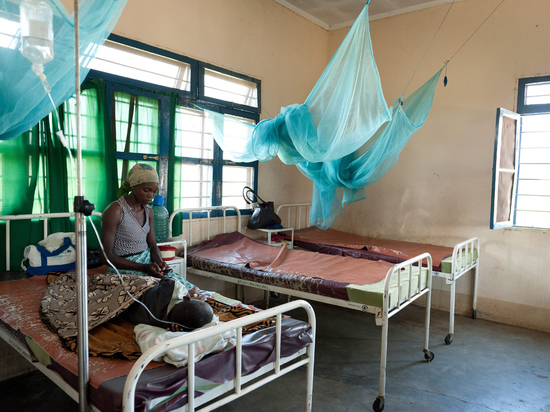To replace the coronavirus: an outbreak of an unknown disease began in Tanzania, the death rate is off scale
[ad_1]

News from Tanzania caused alarm throughout the medical community. Several people are reported to have fallen victim to an unknown infection with similar symptoms. Mortality is on the rise: out of seven cases, five have died. So far, experts are only guessing what it could be: either a new form of Ebola, or leptospirosis, or something else. And most importantly, can it spread around the world?
Tanzania has already become famous for its sadly dismissive attitude towards viral infections. In 2021, the country’s president died of coronavirus, although he claimed that there was no COVID-19 in Tanzania. Now the local Ministry of Health reports a limited outbreak of an unknown disease that happened in the north-west of the country, in the floodplain of the Kagera River (this is not far from Lake Victoria). What caused it is unknown. Patients reported fever, vomiting, bleeding in various parts of the body, and kidney failure. The Tanzanian Ministry of Health reports seven such patients, of whom five have died.
The main suspect in the outbreak is primarily Ebola. Especially since it recently raged in neighboring Uganda and claimed the lives of 55 people. Some types of Ebola have a mortality rate of 60–90%. This infection has become more and more aggressive in recent years, and no one knows the reasons.
“Perhaps this is due to the active development of African territories. In affected countries, social and sanitary conditions are known to be poor. In addition, it is full of other infections such as HIV and tuberculosis, people are starving – all this contributes to the weakening of collective immunity, ”says infectious disease doctor Maxim Prilepin.
The Ebola virus was first isolated by scientists in 1976 in Zaire, in a village on the banks of the Ebola River (hence the name). According to WHO, the deadliest outbreaks of this fever in the past 20 years have occurred in the Congo Valley (for example, 254 people died from it in 1995). It is possible that the Tanzanian outbreak is caused by a new subtype of the virus. By the way, so far in this country Ebola has not been recorded at all. A terrible virus is transmitted through contact with any biological fluids of a patient: a person or an animal (monkeys, chimpanzees, gorillas, according to some sources, even a bat, antelope and porcupine). It is enough to eat from the same plate with the patient, so that the infected saliva gets into the microtraumas in the mouth that most of us have. In addition to high fever and weakness, the disease is manifested by hemorrhagic symptoms: bleeding from the nose, eyes, ears, bloody vomiting, internal bleeding. In addition, patients develop diarrhea, a rash all over the body, and then develop severe liver and kidney dysfunction. “The symptoms are very pronounced, unlike anything else,” says Dr. Prilepin.
Unfortunately, this disease has not been studied very well, so there is no exact information about the ways of transmission of the pathogen. It is unlikely that anyone will be happy with the fact that the causative agent of the disease for a long time (sometimes up to a year) is found in the semen of an ill person – and all this time it can infect others. Unfortunately, in African countries, where the disease occurs most often, contraception is not very good. There is no cure for Ebola. True, there are vaccines.
However, the cause of the Tanzanian outbreak may be another unpleasant infection – leptospirosis (another name is “rat fever”). This formidable disease is also characterized by fever, kidney damage and bleeding. Unlike Ebola, leptospirosis occurs regularly in Russia, even in Moscow and the Moscow region.
The disease is transmitted through sick animals, which excrete pathogens (leptospira bacteria) into the external environment with urine and infect water bodies, food and household items. You can get infected, for example, by drinking well or spring water, by contact with rodents or while swimming in open water.
To determine exactly whether Tanzanian patients are infected with leptospirosis, which is periodically recorded in this country, it is necessary to wait for the results of the tests. If diagnosed early, the disease is treated with antibiotics. With late – lethality usually falls within 15%. Therefore, the variant with leptospirosis in Tanzania is still less likely than with Ebola.
But there may be a third option: a new, previously unseen infection. A sort of rabbit out of a hat, which SARS-CoV-2 became three years ago. Experts believe that this version cannot be ruled out, but further developments must be awaited to confirm or refute it.
And yet, Russian experts do not see the threat of the mysterious disease spreading from Tanzania around the world, although they note some negative trends. The Ebola virus is capable of mutations. This does not happen to him as quickly as with the same coronavirus, but still.
“Favorable conditions have been created for virus mutations on the African continent. It is known that there are many people with HIV infection, which means that they have depressed immunity. In such organisms, the virus is able to survive and reproduce for a long time, and therefore mutate. Scientists have long been discussing the possibility of transmission of Ebola by airborne droplets from person to person, and then the situation will become threatening,” says Maxim Prilepin.
Newspaper headline:
Africa scared to death
[ad_2]
Source link








